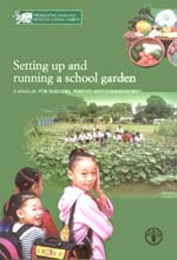1. Editorial
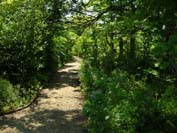 In May I took on a full-time job as Harriet Irving Botanical Gardens’ Community
Outreach and Education Co-ordinator (Acadia University, Nova Scotia). I am excited
about this opportunity to follow other Canadian examples and develop hands-on
experiences to engage the public in plant conservation. This summer I experienced
many spontaneous and incredible “teachable moments”. I was reminded
of the effort, perseverance, on-going evaluation and revision required for effective
education programming. Day to day operations, public needs and unplanned demands
add to the time management challenge; botanical educators across Canada make programming
look easy.
In May I took on a full-time job as Harriet Irving Botanical Gardens’ Community
Outreach and Education Co-ordinator (Acadia University, Nova Scotia). I am excited
about this opportunity to follow other Canadian examples and develop hands-on
experiences to engage the public in plant conservation. This summer I experienced
many spontaneous and incredible “teachable moments”. I was reminded
of the effort, perseverance, on-going evaluation and revision required for effective
education programming. Day to day operations, public needs and unplanned demands
add to the time management challenge; botanical educators across Canada make programming
look easy.
In mid September I was extremely fortunate to meet more educators at BGCI's
Sixth International Congress on Education in Botanic Gardens in Oxford, England.
Over 340 delegates from over 40 countries gathered to share examples, ideas
and strategies about education for plant conservation. It was an intense but
fun week of learning and inspiration. I presented a paper about Conserving Plant
Diversity: The 2010 Challenge for Canadian Botanical Gardens and highlighted
several excellent examples of integrated plant conservation and biodiversity
education programmes at Canadian botanical gardens. Many delegates spoke with
me afterwards to compliment both the Canadian programmes and our collaborative
work to increase the conservation profile and relevance of our gardens. I pass
those compliments on to this network and I would like to add my sincere admiration
for the excellent work you do.
2. Introducing Clayoquot Field Station,
John Platenius, Tofino Botanical Gardens
 Tofino Botanical Gardens officially opened their new facility, the Clayoquot
Field Station, on June 1st, 2006. This dormitory-classroom is intended to initiate,
encourage and enable research, education and conversations that will help people
to understand how to live in a place without diminishing it.
Tofino Botanical Gardens officially opened their new facility, the Clayoquot
Field Station, on June 1st, 2006. This dormitory-classroom is intended to initiate,
encourage and enable research, education and conversations that will help people
to understand how to live in a place without diminishing it.
Researchers and students are priority visitors at Clayoquot Field Station (CFS),
however, individual travelers and groups are also welcome to stay in its hostel-style
environment with an educational focus.
The Gardens and CFS are situated on a 12 acre waterfront property in Tofino,
on Vancouver Island, BC. The property is adjacent to an 80-acre forest preserve,
the waterfront looks onto the 5000-acre Tofino Mudflats Wildlife Management
Area, and all of this is within the 850,000-acre UNESCO Clayoquot Sound Biosphere
Reserve. With the property’s gardens, trails and the old-growth rainforest,
this location provides an ideal setting for research and education in the region.
The Gardens and CFS are operated by the non-profit Tofino Botanical Gardens
Foundation. The Foundation’s mission is to inspire conservation of the
world’s temperate rainforests.
Read more: www.tofinobotanicalgardens.com.
3. Grounds for Change,
Jane Rekstan, Calgary Zoo and Botanical Gardens’
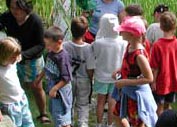 The Calgary Zoo and Botanical Gardens’ schoolyard naturalization program,
funded through a partnership with Agrium Inc., aims to support and facilitate
schools in their efforts to create natural learning spaces on their school grounds
for ecological, education and social benefits.
The Calgary Zoo and Botanical Gardens’ schoolyard naturalization program,
funded through a partnership with Agrium Inc., aims to support and facilitate
schools in their efforts to create natural learning spaces on their school grounds
for ecological, education and social benefits.
We emphasise the use of plants native to the area (within 100 km) to create
low-maintenance landscapes that act as effective tools to enhance the teaching
of Alberta curriculum. Having this program based out of the Zoo and Botanical
Gardens permits us to take advantage of the plant collection, as well as the
horticultural and educational expertise of the staff.
Primarily an outreach program, this enables us to expand the impact of the
organisation, and assist schools in creating high quality, sustainable projects.
Elements of the Grounds for Change program include site visits, committee
meetings, workshops and presentations, access to resources, and membership in
a network of schools.
A new website designed to support schools in other areas of the province will
be available later this fall. In the meantime, more information can be found
on the Zoo’s website www.calgaryzoo.org
under Education/School Programs, or by contacting Jane Reksten at
janer@calgaryzoo.ab.ca
4. Healthy Food Partnership,
Columbia Valley Botanical Gardens & Centre for Sustainable Living
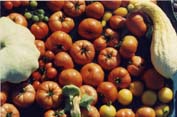 Columbia Valley Botanical Gardens & Centre for Sustainable Living and David
Thompson Secondary School (Invermere, BC) are joining efforts over the next
three years to construct and operate a greenhouse on the school grounds.
Columbia Valley Botanical Gardens & Centre for Sustainable Living and David
Thompson Secondary School (Invermere, BC) are joining efforts over the next
three years to construct and operate a greenhouse on the school grounds.
This leading edge greenhouse will employ the latest design and energy conservation
techniques in the production of organic food. The food, in turn, will be used
in the school’s Chef Training and Career Development programs.
“We see students learning to grow and use healthy foods through this
facility and develop life skills that will assist them in all aspects of their
lives and professional aspirations from horticulture, sustainable design and
construction and entrepreneurship to name just a few examples”, says Alison
Bell, teacher and Chef Training Programme Director at DTSS.
“The Healthy Food Project Greenhouse fits beautifully with our aims as
an organisation” says Maureen Thorpe, CVBG Chair. “Plant conservation,
organic horticulture, integration with community groups, engaging youth in meaningful,
applied projects, enhancing and highlighting community food security issues
– these are at the forefront of our work as a Botanic Garden and Centre
for Sustainable Living.”
For more information call (604) 342-0539.
5. Education for Sustainable Development: Guidelines for Action in Botanic Gardens,
Julia Willison, Botanic Gardens Conservation International
Botanic gardens have always been important centres for environmental education
and in recent years there has been a growing interest in education for sustainable
development (ESD) amongst botanic garden educators. As a holistic process, ESD
attempts to represent the complex and dynamic relationships between the natural
and social sciences thus providing a means of addressing current environmental
and development issues.
BGCI has produced these Guidelines to support botanic gardens in developing
and implementing ESD strategies. The Guidelines provide a rationale for why
botanic gardens need to be involved in ESD, highlighting the importance of botanic
garden education in implementing sustainable development initiatives and offering
a range of ideas for educational approaches.
Read more and download a copy of the Guidelines: http://www.bgci.org/education/
ESD_Guidelines.
6. Plant Search – Searching for plant records,
Sarah Dixon, Botanic Gardens Conservation International
 BGCI’s living collections database, aka the Plant Search
(www.bgci.org/plant_search.php),
is growing all the time. At the moment about a quarter of the world's living
collections are included but we urgently need to improve it so conservationists
can respond rapidly to climate change and other pressing threats.
BGCI’s living collections database, aka the Plant Search
(www.bgci.org/plant_search.php),
is growing all the time. At the moment about a quarter of the world's living
collections are included but we urgently need to improve it so conservationists
can respond rapidly to climate change and other pressing threats.
If you work with a living collection, you can upload your data and then use
our system to analyse your collection for rare plants, crop wild relatives,
images, and much more. It's also a great way to help your country meet it's
conservation commitments - it's a direct contribution to the Global Strategy
for Plant Conservation.
Contact us now to find out how to share your list and help the world save plant
diversity: info@bgci.org
7. Botanical Education in rural Jamaica – A Canadian’s Perspective,
Matthew Wheeler, Canadian International Development Agency (CIDA) & Canadian Urban Institute
Editor’s note: Matthew has a combined interest
in botany, education and botanical gardens and recently joined BGCI. While the
experience he recounts below is not a collaboration with a botanical garden,
I thought subscribers to the email would be interested in the important educational
role of his internship.
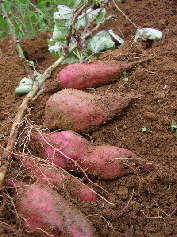 In recent years, declining sweet potato (Ipomoea batatas) production devastated
the livelihood of many Jamaican farmers. In order to increase crop yields without
using additional fertilisers or pesticides, a local potato grower’s cooperative
decided to build a tissue culture lab to provide virus-free planting materials
to farmers.
In recent years, declining sweet potato (Ipomoea batatas) production devastated
the livelihood of many Jamaican farmers. In order to increase crop yields without
using additional fertilisers or pesticides, a local potato grower’s cooperative
decided to build a tissue culture lab to provide virus-free planting materials
to farmers.
Last winter I accepted an internship with the Canadian International Development
Agency and the Canadian Urban Institute to help. I spent five months in rural
Jamaica converting an office building into a laboratory, building a greenhouse,
designing and directing research projects, initiating a unique sweet potato
cultivar into culture, and training Jamaican staff to operate the facility.
Informally, I also educated local farmers about the benefits of the using plants
grown from tissue culture. Many of the farmers lacked a formal education, therefore
explaining about viruses and their modes of transmission was always an interesting
challenge. Most of the information was passed orally and each encounter typically
brought me as much information as I disseminated.
It was rewarding to support a grass roots movement that will directly benefit
local people. I now have a renewed interest in pursuing a career in education
and applying myself to Canadian botanical conservation and biodiversity awareness.
8. One Planet, Many People: Atlas of Our Changing Environment,
United Nations Environment Programme
A comprehensive, visual presentation of scientifically verifiable information
about changes in the global environment can now be downloaded free of charge
at www.na.unep.net/OnePlanetManyPeople/powerpoints.html.
This presentation of environmental hotspots and issues is based primarily
on satellite imagery taken over 30 years showing how human actions and geophysical
activities have changed various parts of the world. Examples include the shrinking
ice in the Arctic, melting glaciers, growth of cities like Las Vegas, forest
loss in the Amazon, and the decline of the Aral Sea and Lake Chad.
| 
 In May I took on a full-time job as Harriet Irving Botanical Gardens’ Community
Outreach and Education Co-ordinator (Acadia University, Nova Scotia). I am excited
about this opportunity to follow other Canadian examples and develop hands-on
experiences to engage the public in plant conservation. This summer I experienced
many spontaneous and incredible “teachable moments”. I was reminded
of the effort, perseverance, on-going evaluation and revision required for effective
education programming. Day to day operations, public needs and unplanned demands
add to the time management challenge; botanical educators across Canada make programming
look easy.
In May I took on a full-time job as Harriet Irving Botanical Gardens’ Community
Outreach and Education Co-ordinator (Acadia University, Nova Scotia). I am excited
about this opportunity to follow other Canadian examples and develop hands-on
experiences to engage the public in plant conservation. This summer I experienced
many spontaneous and incredible “teachable moments”. I was reminded
of the effort, perseverance, on-going evaluation and revision required for effective
education programming. Day to day operations, public needs and unplanned demands
add to the time management challenge; botanical educators across Canada make programming
look easy. Tofino Botanical Gardens officially opened their new facility, the Clayoquot
Field Station, on June 1st, 2006. This dormitory-classroom is intended to initiate,
encourage and enable research, education and conversations that will help people
to understand how to live in a place without diminishing it.
Tofino Botanical Gardens officially opened their new facility, the Clayoquot
Field Station, on June 1st, 2006. This dormitory-classroom is intended to initiate,
encourage and enable research, education and conversations that will help people
to understand how to live in a place without diminishing it.  The Calgary Zoo and Botanical Gardens’ schoolyard naturalization program,
funded through a partnership with Agrium Inc., aims to support and facilitate
schools in their efforts to create natural learning spaces on their school grounds
for ecological, education and social benefits.
The Calgary Zoo and Botanical Gardens’ schoolyard naturalization program,
funded through a partnership with Agrium Inc., aims to support and facilitate
schools in their efforts to create natural learning spaces on their school grounds
for ecological, education and social benefits.  Columbia Valley Botanical Gardens & Centre for Sustainable Living and David
Thompson Secondary School (Invermere, BC) are joining efforts over the next
three years to construct and operate a greenhouse on the school grounds.
Columbia Valley Botanical Gardens & Centre for Sustainable Living and David
Thompson Secondary School (Invermere, BC) are joining efforts over the next
three years to construct and operate a greenhouse on the school grounds. BGCI’s living collections database, aka the Plant Search
(
BGCI’s living collections database, aka the Plant Search
( In recent years, declining sweet potato (Ipomoea batatas) production devastated
the livelihood of many Jamaican farmers. In order to increase crop yields without
using additional fertilisers or pesticides, a local potato grower’s cooperative
decided to build a tissue culture lab to provide virus-free planting materials
to farmers.
In recent years, declining sweet potato (Ipomoea batatas) production devastated
the livelihood of many Jamaican farmers. In order to increase crop yields without
using additional fertilisers or pesticides, a local potato grower’s cooperative
decided to build a tissue culture lab to provide virus-free planting materials
to farmers. 
